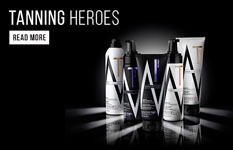
What is a Spray Tan Extractor Fan
What is a Spray Tan Extractor Fan
December 25, 2012Nothing comes without it’s risks, and although the risks can be easily avoided it is certainly not to be taken lightly. Dihydroxyacetone (DHA) is currently approved by the TGA for external use only, so care should be taken by salon owners for fumes not to be inhaled. Of course the best way to achieve this is by using a spray tan extractor fan to act as the ventilator that filters out all those harmful fumes and makes it a cleaner and safer environment for both the client and the staff.
The health of your customers and your staff is eminent for your business, so a spray tan extractor fan is essential for filtering, as it sucks in the air of the spray tanning salon, the fumes that have been accumulated are easily filtered out into cleaner air.
The spray tan extractor fan works very simply – it draws in the excess tanning solution in the air and takes it into the filter it carries. These filters are designed to clean the air and thereby, reduce the mess. The clean air is then thrown out by the system, which makes the environment of the salon comfortable for the operators and clients.
No matter how powerful or well-equipped your spray tan machine is a spray tan extractor fan is crucial, spray tan is wasted during a tanning session. Even HVLP systems tend to overspray in a range between 20-35%. If set on a higher speed, the estimated range of overspray increases. Therefore, all types of spray tanning salons and setups require a proper ventilation system.
In order to create a professional space and environment in your salon, a spray tan extractor fan is an essential element every business should have. It will allow your clients and staff to breathe cleaner air, and eliminate airborne particles gathered by the spray tan. According to the law, it is essential for business owners to install extraction units in their work areas so that the air remains clean for all. This was regulation was officially passed by the Control of Substances Hazardous to Health Regulations.
Let's keep in touch

Copyright 2025 © MoroccanTan. Adore Tanning is a Beyond Skin Beauty (BSB) Company. ABN 94 132 075 515









